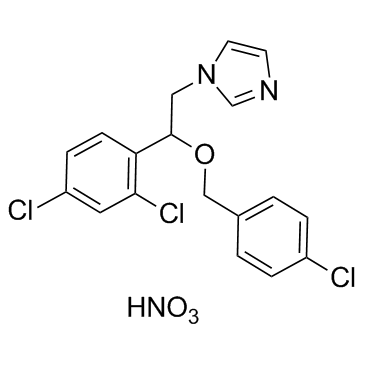Antifungal agents: mode of action, mechanisms of resistance, and correlation of these mechanisms with bacterial resistance.
M A Ghannoum, L B Rice
Index: Clin. Microbiol. Reviews 12 , 501-17, (1999)
Full Text: HTML
Abstract
The increased use of antibacterial and antifungal agents in recent years has resulted in the development of resistance to these drugs. The significant clinical implication of resistance has led to heightened interest in the study of antimicrobial resistance from different angles. Areas addressed include mechanisms underlying this resistance, improved methods to detect resistance when it occurs, alternate options for the treatment of infections caused by resistant organisms, and strategies to prevent and control the emergence and spread of resistance. In this review, the mode of action of antifungals and their mechanisms of resistance are discussed. Additionally, an attempt is made to discuss the correlation between fungal and bacterial resistance. Antifungals can be grouped into three classes based on their site of action: azoles, which inhibit the synthesis of ergosterol (the main fungal sterol); polyenes, which interact with fungal membrane sterols physicochemically; and 5-fluorocytosine, which inhibits macromolecular synthesis. Many different types of mechanisms contribute to the development of resistance to antifungals. These mechanisms include alteration in drug target, alteration in sterol biosynthesis, reduction in the intercellular concentration of target enzyme, and overexpression of the antifungal drug target. Although the comparison between the mechanisms of resistance to antifungals and antibacterials is necessarily limited by several factors defined in the review, a correlation between the two exists. For example, modification of enzymes which serve as targets for antimicrobial action and the involvement of membrane pumps in the extrusion of drugs are well characterized in both the eukaryotic and prokaryotic cells.
Related Compounds
| Structure | Name/CAS No. | Molecular Formula | Articles |
|---|---|---|---|
 |
Econazole (nitrate)
CAS:24169-02-6 |
C18H16Cl3N3O4 |
|
Selective extraction of antimycotic drugs from sludge sample...
2015-01-01 [Anal. Bioanal. Chem 407(3) , 907-17, (2015)] |
|
Azole antifungals are potent inhibitors of cytochrome P450 m...
2002-10-01 [Microbiology 148 , 2937-49, (2002)] |
|
Econazole: a review of its antifungal activity and therapeut...
1978-09-01 [Drugs 16 , 177-201, (1978)] |
|
Inhibition of Ca2+ transport pathways in thymic l...
[Am. J. Physiol. Cell Physiol. 264 , C654-C662, (1993)] |
|
Bactericidal and inhibitory effects of azole antifungal comp...
2000-11-15 [FEMS Microbiol. Lett. 192 , 159-162, (2000)] |